
The 1968 season with the unforgettable idol of motorsports
Bill Ivy had won the 125 cc world championship title last year. With a total of 8 wins in 12 races and two second places, it was a similar dominance to that of Mike “the Bike” in the 250 cc title in 1966. At that time, Mike Hailwood had won all the races in which he finished. The following year, however, the name of the champion at the end of the season remained open until the last race of the season. In the end, Hailwood defended his world title in 1967. Even with today’s point system, it would have been tight until the end.

250cc with today’s point system
But due to the higher consistency Read would have won the 250 World Championship with 180 points, ahead of Hailwood with 177 and Ivy with 176. For the 1968 season, Honda had decided to make a new attack in the 500cc World Championship with a new four-cylinder engine horse riding. The title decision was already a close affair between Agostini (MV) and Hailwood on the Honda in 1967. The 250 and 350 cm³ categories had been firmly under control for two years and now MV Agusta’s long-standing dominance in the premier class should finally fall.

The FIM was turning the motorcycle racing world on its head
Everything turned out completely different from what had been thought in Japan and the general public. Even before the start of the 1968 season, news from the end of February shocked the sports world. Honda withdrew from the competition after seven GP seasons! With 138 wins in the five solo classes, 16 drivers ‘titles and 18 manufacturers’ titles, this decision came as a surprise to many. The reason for this was the announcement by the highest motorcycle sports authority FIM that it would introduce serious technical restrictions in 1969.

The works teams of the 1968 season
Due to the announced regulations, the 4, 5 and 6-cylinder engines of the middle classes developed by the Japanese were banned in 1969. Just like the engines with more than one cylinder in the 50s, and more than 6 gears. There was also a restriction to 2-cylinder engines in the 125 cc class. In this category, Suzuki competed with a V4-cylinder two-stroke against Honda with a five-cylinder four-stroke in the 1967 season. The 50cc 2-cylinder from Suzuki had 14 gears. This was necessary in order to be able to use the narrow speed range at which the engine delivered sufficient power. The Honda and Suzuki plants therefore decided not to participate in the World Cup as early as the 1968 season. The two former Honda factory drivers Hailwood and Bryans received machines and spare parts for 1968. But only for races outside the World Cup, with a clear ban on participation in Grand Prix events.


Calendar 1968 – with major changes
Honda and Suzuki’s impromptu withdrawals should also have an impact on the calendar. Without the two Japanese plants, their home GP suddenly lost its importance. Originally 12 rounds were planned for this year. But after the cancellation of two Grand Prix, the championship from 1968 was ultimately reduced to ten. The overseas races of Canada and Japan went off the calendar. In the 125cc there were only 9 rounds and in the 350cc category there were 7 rounds. Only up to 250cc and for the 500cc premier class 10 World Championship races took place. The 1967 Canadian Grand Prix was an isolated case and never continued. Like German Factory NSU in 1954, Yamaha allegedly assigned the title for 1968 in advance: Phil Read was to win the 125cc World Championship and the 250 title was intended for Bill Ivy.

Season opener at the Nürburgring – another bad luck for the 125s
Instead of April weather, the Eifel started the season with midsummer temperatures. No wonder, the races took place on April 21st in front of a gigantic crowd with around 200,000 visitors. Events in Germany, whether in West or East, just didn’t seem to bring Bill Ivy any luck. So it happened in the 125 cc race, which team-mate Phil Read won, while “Little Bill” had to give up due to problems with the fuel supply. Local hero Hans Georg Anscheidt came second on the privately used, former works Suzuki in front of his compatriot Siegfried Möhringer and the young Dieter Braun (both MZ). After indescribable bad luck in the 2 years before that at the Hockenheimring, it seemed like a bewitched in Germany for Billy.
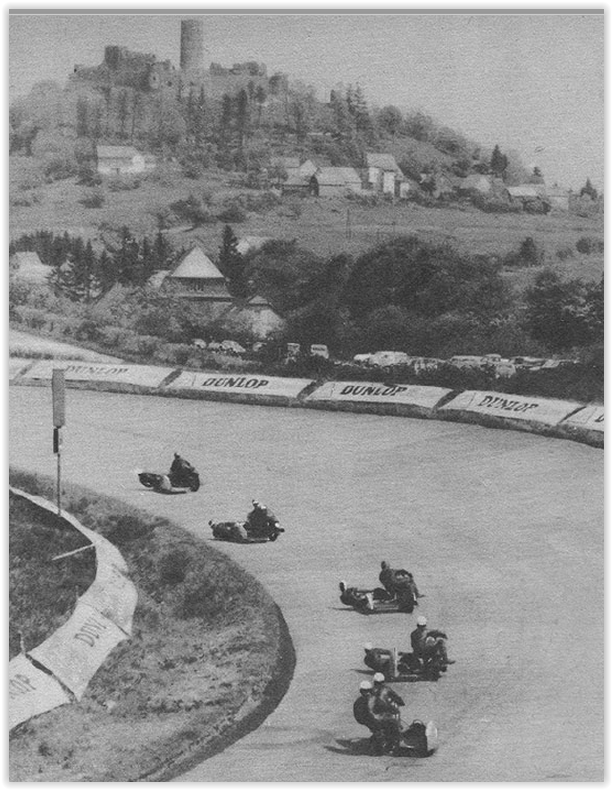

250 cc race – finally the first victory in Western Germany
In the 250 cc race, the hoped-for turnaround finally came. The 250 GP was won by Bill Ivy in front of New Zealander Ginger Molloy (Bultaco) and Kent Andersson (SWE, Suzuki). Read posted a zero and Heinz Rosner couldn’t even start for political reasons. The organizers had announced that if an East German pilot won, they would refuse to fly the GDR flag and play the East German anthem. Despite the intervention of the FIM, they did not give in and the MZ driver was not allowed to start on the instructions of his team leadership. Unfortunately, petty thinking didn’t even stop at racing-sports. Nevertheless, there were friendships between drivers from east and west.

125cc GP of Spain
After winning the 125 cc race at the GP in Montjuic Park in Barcelona in the previous two years, Billy naturally aimed for the hat trick with 3 wins in a row. But despite the fastest race lap, it just shouldn’t be this year. Together with his teammate Phil Read he retired with a crankshaft damage and the Spaniard Salvador Cañellas won ahead of Ginger Molloy (both Bultaco) and Heinz Rosner on MZ. Both Yamahas had retired with exactly the same problem and Ivy had continued the streak of bad luck in the 125s. Derbi’s hope in this race was young Angel Nieto, but he overdid it and fell out.

The next drama at the 250cc Barcelona race
Now the little Englishman really wanted to win the 250cc race, but technical problems slowed him down again. Again the hoped-for victory turned into a failure, while his stablemate Read won ahead of Rosner and Molloy. At the 4th Grand Prix race since the start in Germany, Ivy had unspeakable bad luck for the third time with the extremely vulnerable technology at the time. This time it was a malfunction in the transistor ignition of his Yamaha, which robbed him of any chance of victory. The Swede Kent Andersson also dropped out in the same races (125cc and 250cc) as Ivy due to technical problems.

Round 3 on the Isle of Man with a curious sequence of stall orders
In the 125 cc race, Ivy’s losing streak finally came to an end and he landed in second place behind teammate Read. The direction of the stable management was therefore that Ivy should drive the fastest race lap, but Phil Read must win the race. So it came to one of the strangest scenes that one could only imagine in racing. Billy stopped as the leader on the final lap and asked a marshal at Creg-ny-Baa about the progress of the race. After Ivy received confirmation that he was in the lead, he slowly chugged on to the finish. Read was able to win and both had dutifully fulfilled their assignment. Decades later there was a similar scene at the Formula 1 GP of Austria, when Rubens Barrichello had to give his team-mate victory by means of a team order. Shortly before the finish line, the Brazilian braked his Ferrari while in the lead in 2002 to let Michael Schuhmacher pass. Rubens later stated that he vomited with rage.

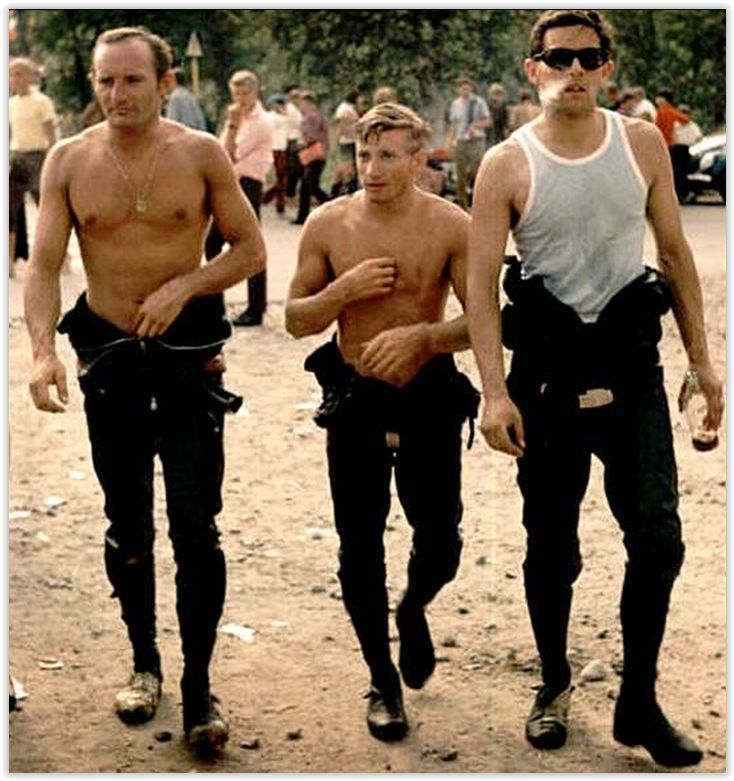
250 cc race of the Tourist Trophy and the brave Billy
You can well imagine the motivation of the little Englishman in the 250 race. On the first lap he drove an incredible speed of 169 km / h. But in the 2nd lap he got his right foot under the peg in the village of Milntown just before Ramsey. The machine made a formal leap to the left and poor Bill violently sprained his right walking tool. But that was not enough on this occasion, the engine hit the left and a piece of an exhaust broke off.

Once again, the technology caused trouble
From now on Ivy’s two-stroke Yamaha only delivered real power on 3 of 4 cylinders, whereupon Phil Read was able to make up a lot of time while in second place. But at the second pit stop Ivy found out that his worst opponent had retired from Bungalow with a puncture. From now on “Little Bill” divided the race intelligently and secured his first 250 cm³ career win on the Isle of Man. Second was the Italian Renzo Pasolini on Benelli ahead of Heinz Rosner (GDR) on MZ. According to eyewitnesses, the little jockey Ivy had to be lifted off the motorcycle after his victory, so bad were his painful injuries!

Another bad luck at the 125 cm³ GP of Assen
After his best time in practice, Bill Ivy was of course the main favorite for this race. But in a starting collision, the Swede Kent Andersson drove over his foot and brushed the Englishman’s Yamaha. He still got off to a good start, but had to pit in second place after the 2nd lap. A burst cooling water pipe was diagnosed there, which might have happened due to the collision at the start. However, Bill also stated that he would probably not have made it through the race because of the foot injury. The bad luck of the favorite of the masses was indescribable! He had only been able to finish two out of six races by then, and now in the 7th round of the World Championship, this is the fourth time he has not been at fault. Phil Read won ahead of Ginger Molloy and Jan Huberts from the Netherlands on MZ.

250cc race with a fair outcome
Probably no one deserved the 250cc victory like Ivy and teammate Phil Read knew that too. Nevertheless, the two fought a remarkable battle for victory, in which in the end the smaller of the two Yamaha works riders crossed the finish line first. In the end, the two kept to themselves whether the result was just a result of the stable order or a real fight. After all, Ivy was now on course for the World Championship as planned with 3 wins after four races, just like Read in the 125s. It went on to Belgium, where this time the smaller class had to take a break because the 125cc category was not advertised in Spa.

Belgian GP – the losing streak continues
Due to his foot injury from the 125cc GP of Assen, Bill Ivy, known as a bad starter, had to get his Yamaha started while sitting in the saddle at the sliding start in Spa-Francorchamps. Interestingly, it was still he who got off the best at the start. At the end of the first lap, Billy was 17 seconds ahead of Rod Gould on a Kawasaki and Read pitted for a spark plug change. At the end of the fourth lap, Bill turned into the pit lane for the same reason.

The bad luck stuck to Ivy’s heels
By the time he pitted, Ivy was already a minute ahead of the closest pursuers. But his bike still stuttered after changing the spark plug and on the following lap one cylinder after the next failed until the engine only ran on one. With it, he could still roll to the pit when his Yamaha completely gave up its ghost. At this point, Heinz Rosner had led MZ, but Phil Read caught him before the finish and won the race. Rodney Gould (GBR) came in third ahead of Hungary’s László Szabó (MZ) and Santiago Herrero (SPA, Ossa).
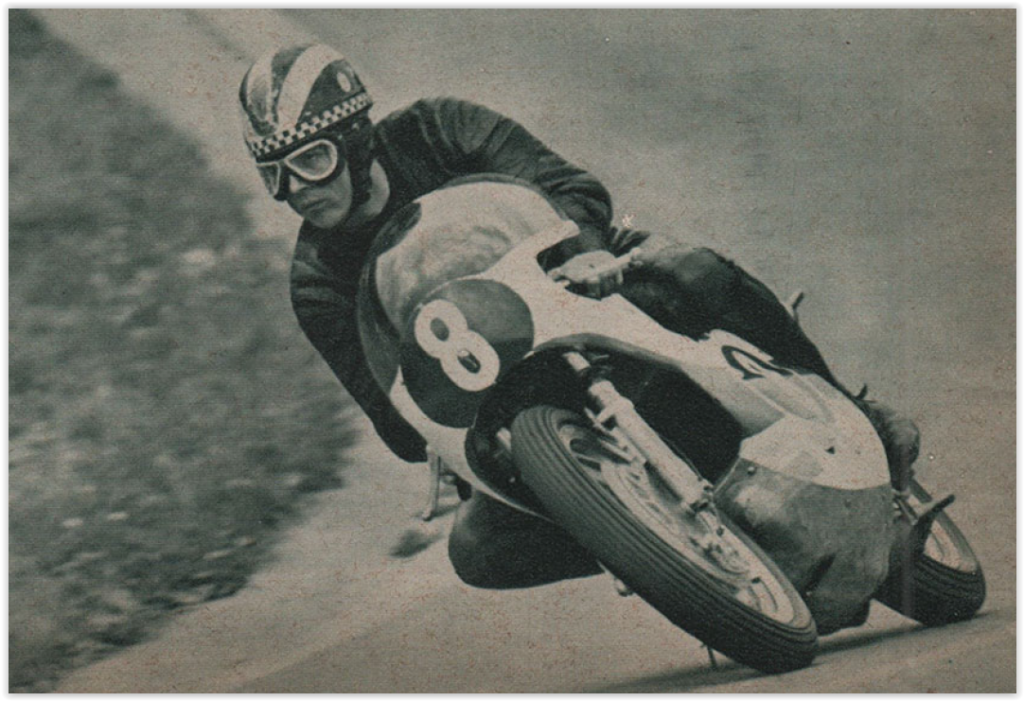
Bill’s last and very successful Sachsenring GP
Nobody could have known at the time that he would be at the start of the Sachsenring GP for the last time in his life in 1968. But it turned out to be a very successful race day for the 160 cm tall tiny man from England. In the saddle of his Yamaha, Bill Ivy was a real giant. But after the start of the 125 cc race he ran into problems and, as so often this season, had to head for the pit. Like Read, he had already started badly and the misfires on his 4-cylinder Yamaha were not good news. After about a minute he was able to drive off again, the mechanics had found the cause and fixed it. Phil Read was already leading before Heinz Rosner and Ivy was only 27th at this point. But the little man with the big fighter’s heart drove as if unleashed. He had already overtaken 12 drivers within 2 laps. In the ninth lap, Bill set a new 125cc lap record with 3: 12.2, with an average of 161,344 km / h. Read won the race in front of an outstanding Ivy and Günter Bartusch (GDR, MZ).

Triumph in the 250 cc race
But it was to get better and Billy started again sitting on his Yamaha in the 250cc, just like at the GP of Spa in Belgium. The two Yamaha factory riders immediately took the lead and drove up and away from the rest of the field. Read and Ivy chased each other across the distance, not giving each other a meter. In the 8th of 15 laps, however, Phil had to pit, the cooling water on his two-stroke Yamaha was already boiling. After exchanging the cooling water, he went back out on the track and had already caught up with Bill after two laps. Read drove as if the devil was after him and set a new lap record with an average of 170 km / h.

Ivy wins after a presumed stable order
Read had taken the lead, but you got the impression he could easily have pulled Ivy away afterwards. However, this did not happen, but he stayed just before Bill. Read behaved exactly as ordered by the Yamaha team superiors before the race. Most newspapers reported clearly after the race that a stable order was decisive for the outcome of the race. But Ivy couldn’t care less. After all the bad luck that he had suffered and the many failures in the previous races, he had deserved victory one way or another. The two team-mates drove on to the Czech Republic and what was then Czechoslovakia, each with a second and first place in their luggage. In Brno, the Masaryk Ring was already waiting for the 2-wheel heroes of that time.

125cc GP of Czechoslovakia
Last year Ivy had won the 125s on the street circuit near the city of Brno and was second behind Read in the 250cc class. But this time the omens were special, especially due to the specifications of their employer Yamaha. A fall in the Farina curve on a wet track in Bill Ivy’s 125cc race ensured that Read won the race without any suspicion of a stable order. He had secured the driver and manufacturer title for himself and Yamaha ahead of time in the fourth to last round of the world championship. The Hungarian Szabo was second ahead of Günter Bartusch (GDR), both on MZ. Ivy was injured on the shin and was badly handicapped for the subsequent 250cc race for this reason.

Polemic about the wrong 250cc winner
After the goal in the 125cc class for Yamaha and Read had been reached, it would have been the turn of the ailing Ivy to win the 250 cc race. Bill bit his teeth with several pain-relieving injections that a doctor had given him before the start. After the start he was initially only in seventh place and Phil also got off badly, but was already leading the field after the first lap. Bill then managed to work his way forward bit by bit.

Read broke his promise
After a while he was in second place, but now the unexpected happened. Amazingly, Phil Read did not stick to the stable order to let Ivy pass and was the first to cross the finish line 15 seconds ahead of Bill. Heinz Rosner was third ahead of Rod Gould. After the race, Ivy stated that in addition to his physical handicap, he had also struggled with braking problems. The boom at Yamaha was of course very crooked and Read, who, according to his own statement, had brought Ivy on board to Yamaha in the first place, suddenly claimed the second world title for himself. He argued that he had already voluntarily let Ivy go first twice before and therefore wanted to fight for the 250 cm³ title from now on.

Grand Prix of Finland
At this point in time, Phil Read had already suspected that Yamaha would withdraw from the GP sport at the end of the year. That is probably one of the reasons why he has been rather inconsiderate to his team-mate since Brno. At the Finnish GP in Imatra, Read won the 125 cc race ahead of Ivy, 3rd place went to Heinz Rosner. In the 250s, Ivy had the better start but crashed on lap 9. He injured his leg again. Victory went to Read, who secured a double victory for the second time in a row.

GP of Ireland – Ulster Grand Prix
We continued on the Dundrod Circuit, a few kilometers east of the northern Irish city of Belfast. At the Ulster GP, Phil Read crashed in the 125 cc race for a change, which was then won by Bill Ivy. This time it was Read who had struggled with braking problems. In the 250 race Ivy won, which he regained the championship lead. It was a small rock that was studded by Ivy’s rear tire in Read’s cooler, reviving the 250cc championship. Read fell out because of this, Heinz Rosner (DDR, MZ) was second behind Bill in front of the Englishman Rodney Gould on a Yamaha.
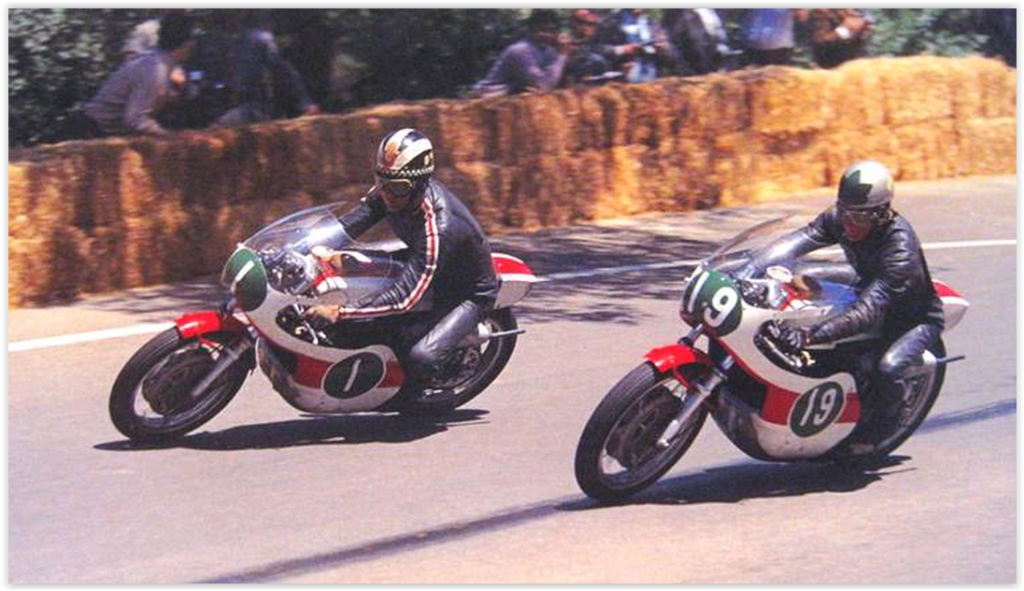
Showdown at the Nations GP in Monza
At the end of the season in Monza, Bill Ivy again won the 125s ahead of Phil Read. Third was hand Georg Anscheidt, who achieved his second podium this season after finishing second on the Nürburgring-Südschleife. But of course the 250 cc race was much more exciting, as Read had long been the world champion in the smaller class. And he promptly won the final ahead of Ivy, which meant that the two fighters in the same stable were exactly equal on points. Even after deducting the deleted results, 46 points each remained for both. Even the number of second places was the same for both drivers with 2 each. After the race, Ivy had declared that due to the loss of performance on his Yamaha, he had no chance of victory. At the end of 1968, the FIM had to investigate this case at its annual congress. Bill Ivy filed 2 protests against Read, which were rejected. One of them was a license plate mismatch.

Questionable decision to award the title at the green table
The FIM settled the Read-Ivy case with the same means as in the 125 cc manufacturer rating of 1953 and 1957. A comparison of the times in the last four races in which both pilots had crossed the finish line was used for this. In this little game of chance, Phil Read won his fourth world title by two minutes, five seconds and three tenths. For many sports fans the question remained unanswered: In the given circumstances, wouldn’t it have been fairer to award the title to the two drivers together? Once again the functionaries hadn’t covered themselves with fame. One can understand that Bill Ivy was far from happy with that. The previous year he even stopped at the Canadian GP to let Read past, and in 1968 he did the same at the TT. In addition, he had given Phil the right of way in other races and all of this just to feel so cheated at the end of the season.

125cc rider world championship 1968

125 cm³ manufacturer ranking list 1968

250cc driver world championship 1968

250 cm³ manufacturer ranking list 1968

Bill Ivy’s successes in 1968 – GP victories in bold
4th Feb, Alicante (Spain), 125 cm³ (Yamaha)
4th Feb, Alicante (Spain), 250 cm³ (Yamaha)
April 21, Grand Prix of Germany, Nürburgring-Südschleife (GER), 250 cm³ (Yamaha)
April 25th, Milano-Marittima, Cervia (Italy), 125cc (Yamaha)
April 25th, Milano-Marittima, Cervia (Italy), 250cc (Yamaha)
May 12, Maipokal (May Cup race), Hockenheim (GER), 125cc (Yamaha)
May 12, Maipokal, Hockenheim (GER), 250cc (Yamaha)
May 19th, Cadwell Park (GB), 125 cm³ (Yamaha)
June 10th, Tourist Trophy, Isle of Man, Lightweight TT 250cc (Yamaha)
June 16, Post-TT Meeting, Mallory Park (GB), 250cc (Yamaha)
June 29th, Dutch TT, Assen (Netherlands), 250cc (Yamaha)
July 14th, Grand Prix of the GDR, Sachsenring (GDR), 250 cm³ (Yamaha)
17th Aug, Ulster Grand Prix, Dundrod (Northern Ireland), 125cc (Yamaha)
17th Aug, Ulster Grand Prix, Dundrod (Northern Ireland), 250cc (Yamaha)
2nd Sept, Oulton Park (GB), 250cc (Yamaha)
15th Sept, Grand Prix des Nations, Monza (Italy), 125cc (Yamaha)
Sept 22nd, “Race of the Year” meeting, Mallory Park (GB), 125 cm³ (Yamaha)
Sept 29, Riccione (Italy), 125 cm³ (Yamaha)
Oct 6, “Race of the South” meeting, Brands Hatch (GB), 125cc (Yamaha)
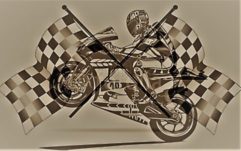
No Comments Yet